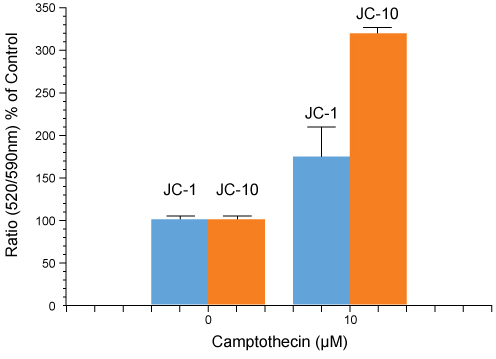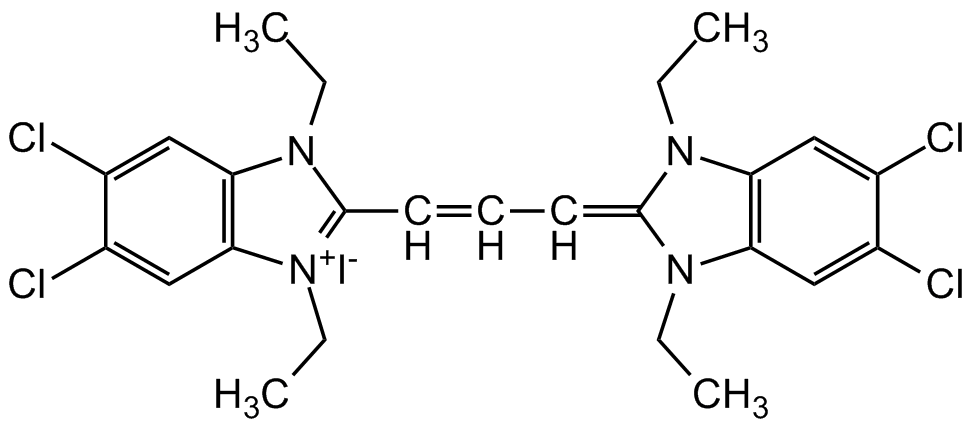
Chemical Structure
JC-10 (high purity)
AG-CR1-3600
Estimated Purity>98%
Product group Chemicals
Molecular Weight~600
Overview
- SupplierAdipoGen Life Sciences
- Product NameJC-10 (high purity)
- Delivery Days Customer10
- CertificationResearch Use Only
- Estimated Purity>98%
- Molecular Weight~600
- Scientific DescriptionChemical. MW: ~600. JC-10 is superior analog of JC-1, useful for determining mitochondrial membrane potential (MMP) in cells by flow cytometry, fluorescence microscopy and in microplate-based fluorescent assays. JC-10 is a cationic, lipophilic dye that accumulates in mitochondria of cells with a polarized mitochondrial membrane, selectively generating an orange J-aggregate emission profile (lambdaex = 540 nm/lambdaem = 590 nm) in healthy cells. Upon cell injury or cell death, as membrane potential decreases, which results in the failure to retain JC-10 aggregates in the mitochondria and JC-10 monomers are generated resulting in a shift to green emission (lambdaex = 490 nm/lambdaem = 525 nm). JC-10 shows improved solubility compared to JC-1 in aqueous media and an ability to detect subtler changes in mitochondrial membrane potential loss. JC-10 allows for qualitative visualization (shift from orange to green fluorescence) and quantitative detection (fluorescence intensity ratio) of mitochondrial membrane potential changes. Wavelength Maxima: lambdaex = 510 nm - lambdaem = 525 nm. - JC-10 is superior analog of JC-1, useful for determining mitochondrial membrane potential (MMP) in cells by flow cytometry, fluorescence microscopy and in microplate-based fluorescent assays. JC-10 is a cationic, lipophilic dye that accumulates in mitochondria of cells with a polarized mitochondrial membrane, selectively generating an orange J-aggregate emission profile (lambdaex = 540 nm/lambdaem = 590 nm) in healthy cells. Upon cell injury or cell death, as membrane potential decreases, which results in the failure to retain JC-10 aggregates in the mitochondria and JC-10 monomers are generated resulting in a shift to green emission (lambdaex = 490 nm/lambdaem = 525 nm). JC-10 shows improved solubility compared to JC-1 in aqueous media and an ability to detect subtler changes in mitochondrial membrane potential loss. JC-10 allows for qualitative visualization (shift from orange to green fluorescence) and quantitative detection (fluorescence intensity ratio) of mitochondrial membrane potential changes. Wavelength Maxima: lambdaex = 510 nm - lambdaem = 525 nm.
- Storage Instruction-20°C,2°C to 8°C
- UNSPSC41116134


